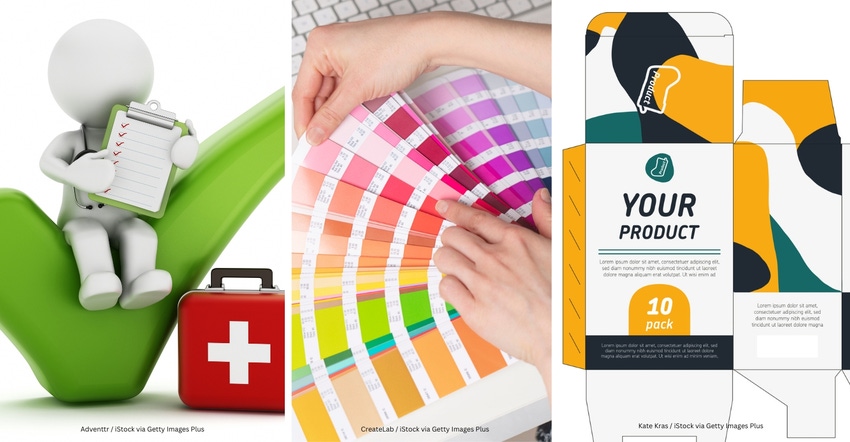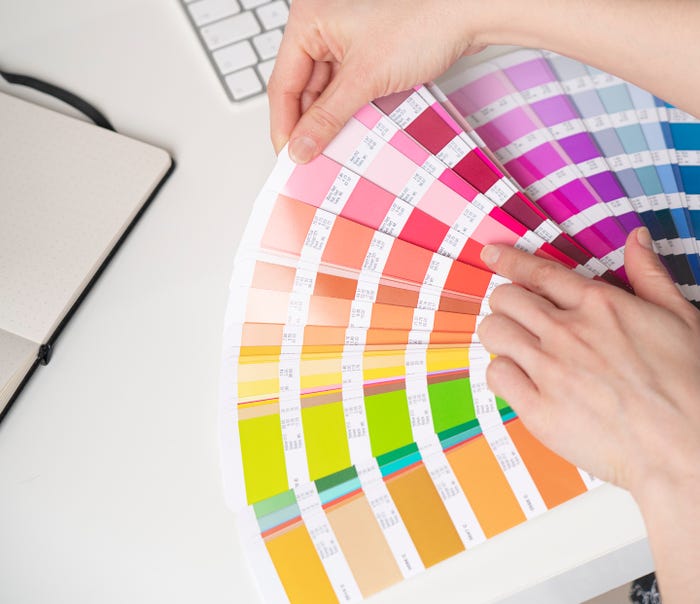3 Tips to Consider Before Freezing Packaging Design During Human Factors Research
During medical device development, knowing when to finalize your package can help ensure a smoother validation process, the potential for faster speed to market, and patient safety.

FDA has been very clear: It wants manufacturers to test the final version of their medical device. So when it comes to the question of when to freeze an element of design, the simple answer is: Freeze a product’s design elements only when they are complete.
But when manufacturers submit a medical device for testing, they often overlook the role packaging plays in the testing process. It’s an approach that often stems from one of two assumptions. Either the manufacturer believes packaging doesn’t matter to the testing process because it isn’t a physical element of the actual device, or they assume that unfinished branding elements — like colors and product names — won’t impact testing.
The fact is that finalized packaging and brand elements can impact usability in critical ways. Here are three key elements to consider before freezing packaging design during human factors (HF) research.

1. Validate products when packaging is as close to launch as possible.
Product development is an iterative process. To most efficiently support the development process, HF research teams test the design of a product (such as an auto-injector), analyze the data, modify the design to accommodate those results, and then retest it. The goal: A product’s design elements, including its packaging, will be as close to launch as possible before it’s submitted to the FDA for validation.
This iterative design work is distinct from truly “freezing” a product’s design. Still, HF teams often “freeze” individual aspects of packaging during the development process — that is, in advance of validation testing — to down-select and determine design elements that best fit user needs.
As an example of this process, let’s look at two common options for cartons that hold multiple auto-injector pens:
1. “Bunk bed” packaging features one device on top of the other in the box.
The result: only one pen is visible / accessible when users open the product’s packaging; to see or select the second pen requires removing the first from the package.
2. “Co-coffin” packaging features two devices side by side.
The result: users can see both devices when they open the package and select one without moving the other.
How down-selection guides researchers to select one style of packaging over the other can depend on a number of factors. Maybe a product requires two injections to deliver a full dose of a drug. Results of HF testing might be used to show that the “co-coffin” style packaging reduces the risk of users only completing the first injection. Alternatively, a product might involve co-packaging two different drugs in the same carton, but the order in which the drugs are delivered is important. HF testing might demonstrate that the “bunk bed” style orientation gently steers users to inject the top pen first.
In any case, this is only a brief example of the variety of scenarios that may prompt HF research teams to iteratively “freeze” packaging design during the development process.
Down-selecting all elements of a product’s packaging and overall design helps HF teams work toward their ultimate goal: successful validation of their product. That’s why, with that in mind, it’s best practice to only submit a product for validation once all elements have been finalized.
Ideally, this means all packaging elements will be finalized and frozen as well – including the brand colors and the brand name that will go to market if the product gets approved.
Next, let’s look a bit further into two reasons why.

2. Brand names can influence how users experience products.
Once it’s time for HF teams to submit a device for validation testing, they can run into a problem: the product’s brand name hasn’t yet been chosen. That may sound like a small issue. But since brand names can influence how users experience products, it’s a potentiality manufacturers and their HF teams should address before the validation process.
“Since brand names can influence how users experience products, it’s a potentiality manufacturers and their HF teams should address before the validation process.”
One common solution manufacturers may turn to is selecting a “placeholder” label (such as “Brand X” or “TradeName”) to use on the packaging during testing. Such labels allow the manufacturer to display other text-related branding elements, such as font and color. But the practice may ultimately create another issue.
Product names inspire both positive and negative associations. Those associations, including knowledge users might have about what a brand’s name signifies about a device, can impact how products are interacted with in real-world environments of use.
For example, if during testing HF researchers present a participant with a product name that includes “log” (such as Admelog, Humalog, or NovoLog), those familiar with such medications may often assume that the product under study is a rapid acting insulin. Conversely, if participants are instead presented with “Brand X” or “TradeName,” it’s possible they won’t take the same actions that they might when recognizing that they're interacting with a device that delivers rapid acting insulin.
In such a case, the manufacturer and its HF team would experience a suboptimal validation testing process that yields potentially erroneous results.
The solution, however, is relatively straightforward. When brands generate fake, but realistic, brand names for their products, rather than repying on an obvious “placeholder” label, they reduce the risks of name-associated failures of use (that is, test artifacts) during testing.
As mentioned above, another branding element – color – presents similar potential for test artifacts. Next, let’s look at the impact colors can have on the testing process.

3. Colors can impact what packaging communicates to users.
Brand colors can impact the effectiveness of HF research and product testing in many ways. One reason: what users “understand” or “learn” about a product from its packaging can be a direct result of how that packaging “communicates” via the colors it displays.
For example, if brand colors are too close to colors that are usually reserved for communicating something specific, it can lead users to make associations or assumptions that impact how they interact with a product. This “proximity effect” is perhaps most easily explained by examining what the color red often represents: a caution statement or warning.
On the one hand, because of this common association, if branded text is displayed in red, it’s important to balance the placement of the text so that it’s not in close proximity to an element like a caution statement. Problematically, another proximity effect could be red-colored branded text being placed near non-critical information. The result: that information’s importance becomes inflated, potentially taking focus away from critical safety information presented elsewhere on the packaging.
In addition to taking steps to avoid a proximity effect’s use-related errors, it’s important for HF teams to design for differentiation. By choosing product elements that differ from competing products already on the market (such as brand colors for a long acting insulin that are similar to an already approved mealtime insulin), manufacturers can avoid potentially life-threatening consequences.
Give FDA what it wants to increase speed to market.
Freezing packaging – including branding elements on the package, like brand names and colors – helps manufacturers avoid navigating post-validation design changes to elements that the FDA has accepted.
That’s why, as helpful as iterative work is during the development process, the FDA’s expectations for validation testing should ultimately guide decisions about when to freeze all elements of a device in advance of validation testing.
The benefit? A smoother, more accurate validation process and the potential for increased speed to market.
Jim Kershner is a Director at Bold Insight, a user experience (UX) and human factors (HF) research agency. Kershner has 20+ years of medical device product development experience, ranging from orthopedic implants and surgical instruments, to endovascular products, to drug delivery systems.
About the Author(s)
You May Also Like




